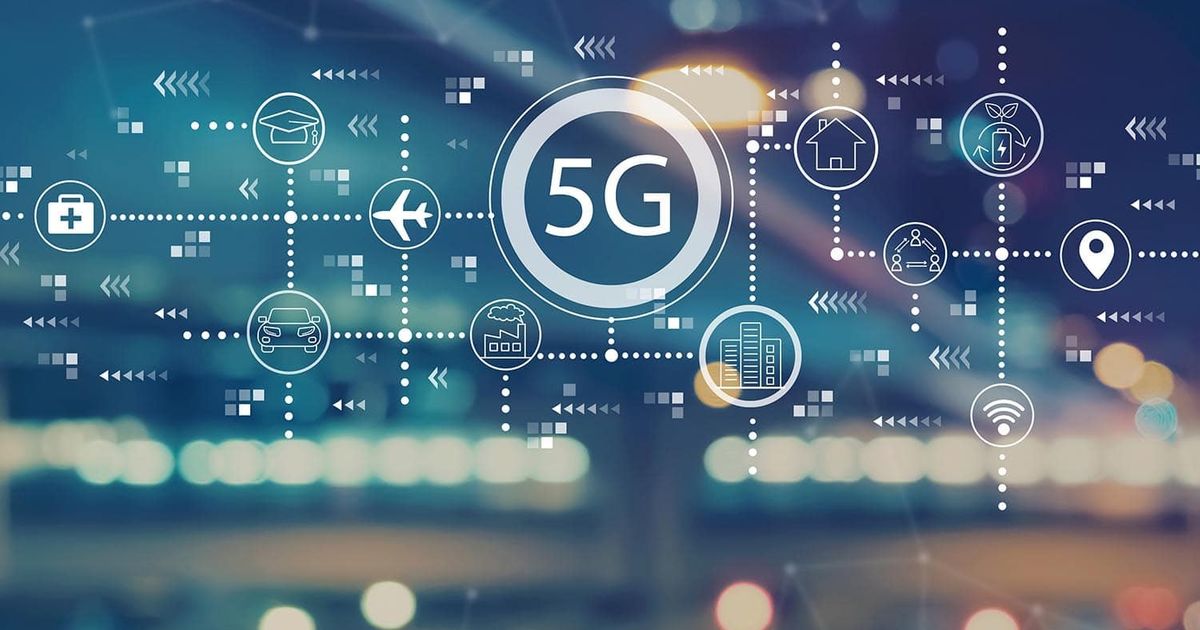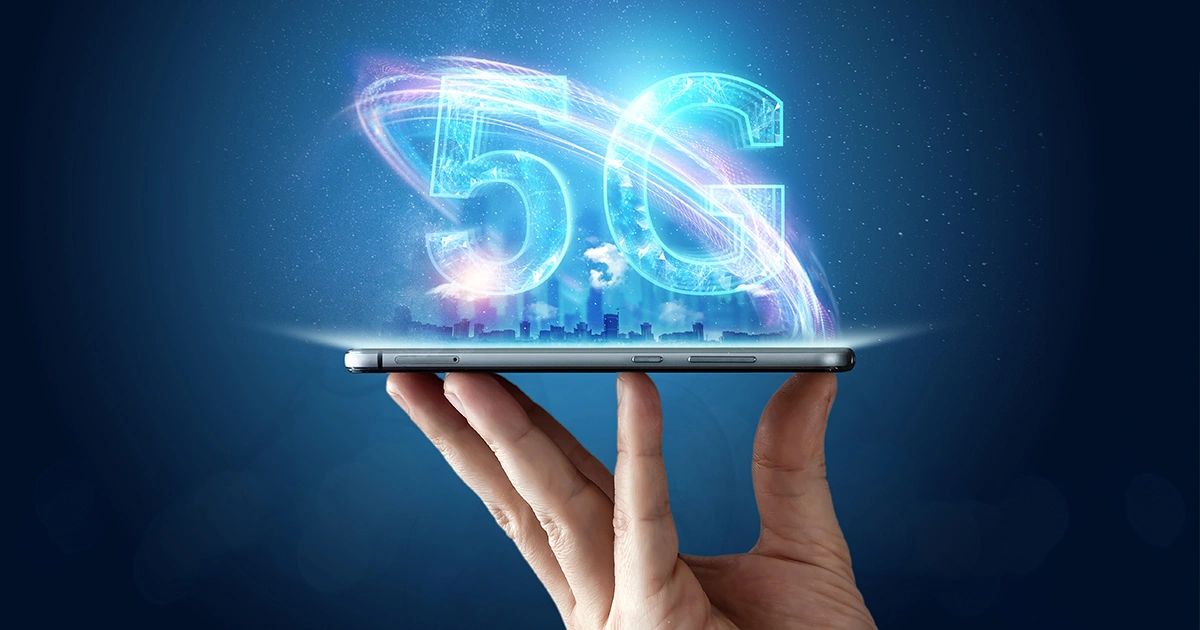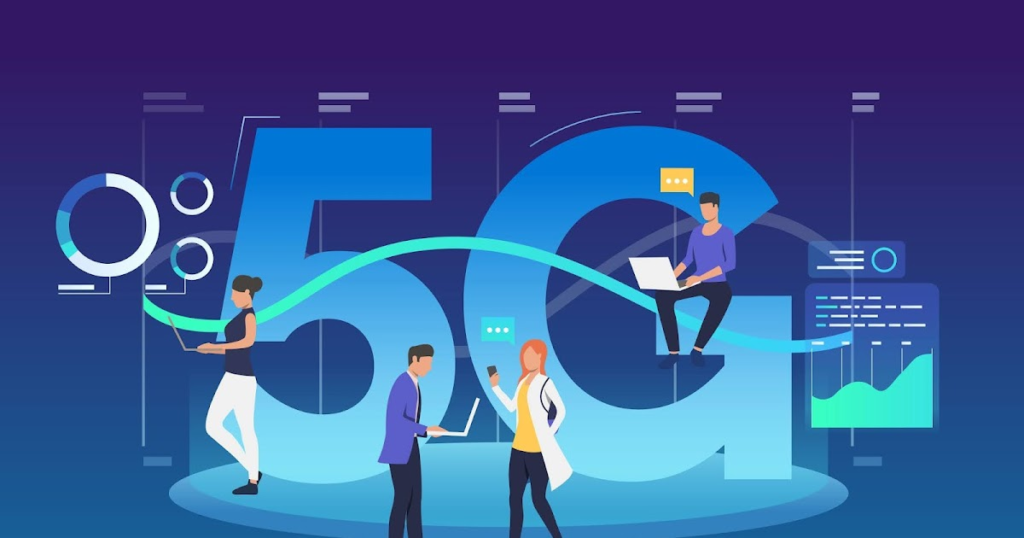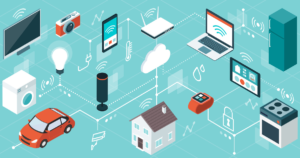5G Technology: The Future of Connectivity and Its Implications
The world of telecommunications is standing on the brink of a monumental shift with the emergence of 5G technology. This revolutionary advancement promises to reshape how we connect, communicate, and conduct business. In this comprehensive exploration of 5G, we’ll take a deep dive into the evolution of connectivity, unraveling the intriguing journey from 1G to 5G, understanding what sets 5G apart from its predecessors, and delving into the fundamental technologies that underpin its capabilities.
Understanding 5G Technology

The Evolution of Connectivity: From 1G to 5G
The journey of mobile communication began with the humble 1G network, which allowed only voice calls. Subsequent generations introduced essential improvements, such as text messaging (2G) and mobile internet (3G and 4G). Now, 5G represents the fifth generation, and it’s about much more than just faster downloads. It’s a profound shift in how we connect.
What Sets 5G Apart
What truly distinguishes 5G from its predecessors is its unparalleled speed, low latency, and extensive connectivity. It’s not just an incremental improvement; it’s a leap into a new dimension of communication. With 5G, we’re no longer bound by the limitations of our current networks, unlocking a world of possibilities for connectivity and communication.
The Fundamentals of 5G
Millimeter Waves
At the heart of 5G’s capabilities are millimeter waves, high-frequency radio waves that enable data to be transmitted at breathtaking speeds. Operating in the spectrum between 30 GHz and 300 GHz, these waves have unlocked a world of opportunities for wireless communication. They can carry vast amounts of data and transmit it at lightning speed, promising a future where lag and buffering become distant memories.
Massive MIMO
Massive Multiple-Input Multiple-Output (MIMO) technology is another groundbreaking aspect of 5G. By using a multitude of antennas, it significantly enhances signal quality and coverage. This means you’ll have more bars on your phone, and more importantly, you’ll have faster, more reliable connections, even in crowded areas.
Beamforming
Beamforming is a smart technique where the signal is directed straight to your device, rather than being broadcast indiscriminately. Think of it as a spotlight focusing on you in a dark room. This precision targeting not only improves signal strength but also reduces interference, making 5G networks more efficient and robust.
The Promise of 5G
Revolutionizing Communication
5G has the potential to revolutionize the way we communicate. It’s not just about making our Instagram feeds load faster; it’s about unlocking entirely new ways to connect and interact.
Ultra-Fast Internet Speeds: Gigabit Speeds and Beyond
5G isn’t just faster; it’s gigabit-fast. This means that downloading a high-definition movie will take seconds, not minutes. It means you can stream 4K videos with virtually no buffering. And it means the internet becomes an incredibly powerful tool for everything from remote work to entertainment.
Low Latency for Real-Time Interaction
Low latency is the holy grail of real-time communication. It’s the time it takes for data to travel from one point to another. With 5G, latency is dramatically reduced, which is crucial for applications that require real-time interaction, like online gaming, telemedicine, and autonomous vehicles.
IoT and Smart Cities
.jpg)
Connected Devices Everywhere
With the Internet of Things (IoT) becoming increasingly prominent in our lives, 5G’s capacity for connecting a massive number of devices simultaneously has significant implications. It’s not just your smartphone and laptop that are connecting; it’s your thermostat, your fridge, your car, and even your toaster. The IoT is transforming our lives, and 5G is the backbone of this transformation.
Impact on IoT Growth
As 5G networks become more widespread, the IoT will continue to flourish. This growth will drive innovation across various industries, from agriculture and healthcare to smart cities and transportation. As more devices get connected, data becomes more accessible, leading to more informed decisions.
Smart Cities and 5G
The concept of smart cities, where every aspect of urban life is optimized for efficiency and sustainability, is rapidly becoming a reality, thanks to 5G. Smart traffic management, energy-efficient lighting, and waste reduction are just a few areas where smart cities are leading the charge.
Enhanced Mobile Experiences
Augmented Reality (AR) and Virtual Reality (VR)
Entertainment and education are two areas where 5G’s capabilities are poised to shine.
Immersive Entertainment
Immersive experiences like augmented reality (AR) and virtual reality (VR) are no longer limited to science fiction. With 5G, these technologies can reach new heights, transforming gaming, movies, and interactive experiences. Imagine stepping into your favorite movie, or collaborating with colleagues in a virtual office space.
AR/VR in Education and Training
In the educational realm, 5G opens doors to interactive learning experiences. From virtual field trips that take students to the heart of the Amazon rainforest to hands-on laboratory simulations, students can engage with content in unprecedented ways, making learning more engaging and effective.
The Business World and 5G
5G in Business
5G isn’t just about personal connectivity; it’s a game-changer for businesses too.
Industrial Internet of Things (IIoT)
The Industrial Internet of Things (IIoT) is reshaping the manufacturing landscape. With its high reliability and low latency, 5G ensures that sensors, machines, and robots can communicate seamlessly, leading to more efficient production processes and predictive maintenance.
Supply Chain and Manufacturing
The supply chain is becoming more transparent and responsive thanks to 5G. Real-time tracking and data analysis enable companies to optimize inventory management, enhance logistics, and respond rapidly to changing market conditions.
Healthcare and Telemedicine
The healthcare sector has seen a surge in telemedicine with the advent of 5G. Remote monitoring of patients, enhanced diagnostics, and treatment recommendations are all facilitated by high-speed, low-latency connections. Whether you live in a bustling city or a remote village, access to top-notch medical expertise is becoming more accessible.
5G in Healthcare
Telemedicine and Remote Healthcare
Telemedicine has experienced a renaissance with the capabilities of 5G. Remote monitoring of patients, enhanced diagnostics, and treatment recommendations are just the beginning of the healthcare transformation.
Remote Monitoring of Patients
From tracking vital signs to remotely managing chronic conditions, 5G enables healthcare providers to deliver more effective care, especially in remote or underserved areas where a trip to the doctor may not be feasible.
Enhanced Diagnostics and Treatment
With high-resolution video conferencing and real-time data sharing, 5G empowers healthcare professionals to diagnose and treat patients more effectively, even from a distance. Imagine a specialist in one part of the world offering insights to a colleague who is in a different hemisphere. It’s not just a possibility; it’s already happening.
The Gaming Industry and 5G
Cloud Gaming
The gaming industry is on the brink of a revolution, thanks to cloud gaming and the power of 5G.
Reduced Latency for Online Gaming
Online gamers know that every millisecond counts. With 5G’s reduced latency, online gaming becomes more responsive and enjoyable, with virtually no lag. It’s a dream come true for gamers who want to immerse themselves in fast-paced action without the frustration of lag.
Mobile Gaming Enhancements
Mobile gamers, too, will enjoy the benefits of 5G. Mobile gaming experiences will become smoother, and graphics will be more stunning, opening new possibilities for developers. It’s not just about playing games; it’s about experiencing them in a whole new way, on the device you already have in your pocket.
5G and Autonomous Vehicles
Connected and Autonomous Vehicles
The dream of autonomous vehicles is inching closer to reality with 5G.
Vehicle-to-Everything (V2X) Communication
Connected vehicles can share critical information with each other and with infrastructure, enhancing road safety and traffic efficiency. Imagine a world where your car can “talk” to the cars around it, to traffic signals, and to the road itself. This isn’t just science fiction; it’s the future of transportation.
Safer Roads and Efficient Traffic
With 5G connectivity, vehicles can communicate with each other and traffic management systems in real time. This means faster response to potential accidents and more efficient traffic flow. The result is not just safer roads but also less time spent in traffic.
5G and Agriculture
Precision Agriculture
Agriculture is embracing technology, and 5G is at the forefront of this transformation.
Smart Farming
Smart farming leverages 5G to optimize crop cultivation. Sensors and drones provide real-time data on soil conditions, weather, and crop health, allowing farmers to make informed decisions. It’s about doing more with less, improving yields while conserving resources.
Crop Monitoring and Data Analytics
Data analytics play a significant role in modern agriculture. With 5G, large datasets can be analyzed quickly, helping farmers make smarter choices about planting, harvesting, and resource management. It’s about moving from guesswork to data-driven decision-making, which can have a substantial impact on global food security.
Challenges and Concerns
Infrastructure and Investment
Building the 5G Network
The rollout of 5G networks is no small feat. Challenges in infrastructure development include the deployment of small cells and fiber optics, as well as the need for significant investments. It’s a complex process that requires careful planning and execution, and it’s a substantial commitment for telecommunications companies and governments.
Economic and Regulatory Considerations
5G’s implementation has economic and regulatory implications. Balancing innovation with economic sustainability, while complying with regulations, is a delicate act that governments and corporations must navigate. It’s about ensuring that the benefits of 5G reach everyone, while also maintaining a level playing field for businesses.
Security and Privacy

Cybersecurity Concerns
The interconnectedness facilitated by 5G also raises concerns about cybersecurity. Protecting data and privacy in a hyper-connected world is a top priority. It’s about safeguarding sensitive information, whether it’s your personal data, your business’s proprietary information, or critical infrastructure.
Data Privacy in a Connected World
As data flows between devices and networks, safeguarding individual privacy becomes a paramount concern. Regulations and encryption play a pivotal role in maintaining data integrity. It’s about ensuring that your personal information remains yours, and it’s about creating a digital environment where you can trust the systems you interact with.
Mitigating Risks
The risks in a 5G world are real, but they are manageable. Robust security measures, including intrusion detection systems, multi-factor authentication, and ongoing monitoring, can mitigate the risks associated with the proliferation of connected devices. It’s about being proactive in identifying and addressing potential threats.
Environmental Impact
Energy Efficiency
While 5G technology offers numerous benefits, it’s essential to consider its environmental impact. Energy-efficient infrastructure and devices are vital for sustainability. It’s about ensuring that our technological advancements don’t come at the cost of our planet.
E-Waste Management
The rapid pace of technological advancements results in electronic waste. E-waste management practices are evolving to address the disposal and recycling of obsolete 5G devices and equipment. It’s about responsibly handling the devices that have reached the end of their useful life.
Balancing Advancements and Sustainability
The pursuit of technological advancements should not come at the cost of environmental sustainability. Striking a balance between innovation and eco-friendliness is a critical challenge. It’s about making choices that ensure a better future for both technology and the environment.
The Global 5G Landscape

Adoption Across the World
The adoption of 5G technology varies across the globe, with different countries at various stages of deployment. It’s about understanding the diverse landscape of 5G and the global implications of this technology.
Leading Countries in 5G Deployment
Certain countries, like South Korea and the United States, have emerged as leaders in 5G deployment, while others are working to catch up. It’s about recognizing the pioneers and the challenges that early adopters have faced.
Bridging the Digital Divide
As 5G becomes more widespread, efforts are being made to ensure that even underserved areas benefit from the connectivity it provides, thus reducing the digital divide. It’s about making sure that everyone has a fair shot at the opportunities that 5G brings.
Conclusion
In conclusion, 5G technology is poised to usher in a new era of connectivity and innovation. As it becomes more prevalent, industries, businesses, and individuals will need to adapt to fully leverage its capabilities. The promise of ultra-fast internet, low latency communication, and a world of interconnected devices offers exciting opportunities, but also brings about challenges that must be met head-on. The 5G revolution is not just about speed; it’s about shaping the future of how we connect and interact in an ever-evolving digital landscape. It’s about embracing the possibilities and preparing for a world where connectivity knows no bounds.
5G Technology FAQ
What is 5G technology?
5G stands for the fifth generation of wireless technology. It’s a new and advanced form of mobile communication that promises significantly faster data speeds, lower latency, and the ability to connect a massive number of devices simultaneously.
How does 5G differ from previous generations of wireless technology?
Unlike its predecessors, 5G is not just about faster internet speeds. It offers ultra-fast gigabit speeds, low latency, and extensive connectivity, making it suitable for applications beyond just smartphones and laptops.
What are millimeter waves in 5G technology?
Millimeter waves are high-frequency radio waves used in 5G to transmit data at extremely high speeds. These waves operate in the spectrum between 30 GHz and 300 GHz and are key to delivering the high-speed data promised by 5G.
What is Massive MIMO in 5G?
Massive Multiple-Input Multiple-Output (MIMO) technology employs a multitude of antennas to significantly enhance signal quality and coverage. This technology plays a crucial role in providing faster and more reliable connections.
How does beamforming work in 5G networks?
Beamforming is a technique that directs the signal directly to the user’s device, rather than broadcasting it indiscriminately. This precision targeting improves signal strength and reduces interference, making 5G networks more efficient and robust.
What can I expect in terms of internet speed with 5G?
5G offers speeds exceeding 1 Gbps, which means you can download large files, stream 4K videos, and enjoy online gaming with minimal buffering. It’s a significant improvement over 4G networks.
How does 5G impact the Internet of Things (IoT)?
5G’s extensive connectivity capabilities are essential for the IoT’s growth. It enables a world where billions of devices, from smart appliances to industrial sensors, can communicate seamlessly.
What are the implications of 5G for smart cities?
5G is a critical component of smart cities, where every aspect of urban life is optimized for efficiency and sustainability. It allows for intelligent traffic management, energy-efficient lighting, and waste reduction, among other advancements.
How does 5G improve augmented reality (AR) and virtual reality (VR) experiences?
With 5G, AR and VR become more immersive and responsive. Whether it’s immersive gaming experiences or interactive education and training, 5G opens new possibilities for these technologies.
How is 5G transforming the business world?
5G is a game-changer for businesses, particularly in the areas of industrial IoT, supply chain optimization, and telemedicine. It allows for real-time data analysis, remote monitoring, and enhanced diagnostics and treatment.
What are the benefits of 5G in healthcare and telemedicine?
5G enables remote monitoring of patients, enhances diagnostics, and offers treatment recommendations. It’s a boon for telemedicine, as it allows for high-quality video conferencing and real-time data sharing.
How does 5G impact the gaming industry?
The gaming industry benefits from 5G through cloud gaming, reduced latency for online gaming, and enhanced mobile gaming experiences. It promises a more responsive and enjoyable gaming experience.
What is the role of 5G in autonomous vehicles?
5G is crucial for the development of autonomous vehicles. It enables vehicle-to-everything (V2X) communication, making roads safer and traffic more efficient.
How does 5G benefit agriculture?
5G supports precision agriculture by providing real-time data on soil conditions, weather, and crop health. It also facilitates data analytics, helping farmers make informed decisions for crop cultivation.
What challenges does 5G technology face?
Challenges include the need for significant infrastructure development, economic considerations, cybersecurity concerns, data privacy, environmental impact, and the diverse global adoption of 5G.
How does 5G address security and privacy concerns?
5G networks implement robust security measures, including intrusion detection systems and encryption, to protect data and privacy. Regulatory compliance plays a pivotal role in maintaining data integrity.
What is the environmental impact of 5G?
5G technology should be energy-efficient to minimize its environmental impact. Proper e-waste management practices are also necessary to address the disposal and recycling of obsolete 5G devices and equipment.
How is 5G adoption progressing across the world?
The adoption of 5G varies globally, with some countries leading in deployment. Efforts are being made to bridge the digital divide and ensure that underserved areas benefit from 5G connectivity.
What’s the future of 5G technology?
The future with 5G promises to transform industries, connectivity, and the way we live and work. It’s about preparing for an era where connectivity knows no bounds and innovation is at the forefront.
How can I prepare for the 5G revolution?
Stay informed about 5G developments, be ready to embrace new technologies and applications, and consider the implications of 5G for your personal and professional life. It’s about being ready for a world of boundless connectivity and opportunities.
In our previous blog post on “Emerging Trends in Autonomous Vehicles and Smart Mobility,” we explored the exciting developments in the world of autonomous vehicles and their role in shaping smart cities. If you’re interested in learning more about the future of transportation and how it intersects with smart city infrastructure, this insightful resource is a must-read. Click here to delve into the world of autonomous vehicles and discover how they are revolutionizing urban mobility.
For an even deeper dive into the fascinating realm of smart cities and the integral role that autonomous vehicles play in shaping their infrastructure, we recommend reading the blog post “Smart Cities: A New Look at the Autonomous Vehicle Infrastructure” on Medium. This well-researched article provides valuable insights into the interconnected future of transportation and urban development. Explore how cities are embracing autonomous technology to create more sustainable, efficient, and connected urban environments.






Uma resposta